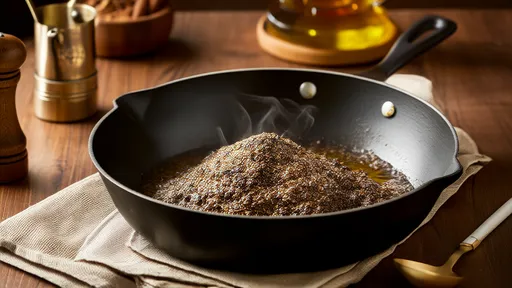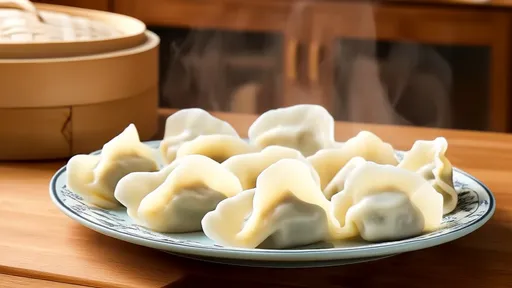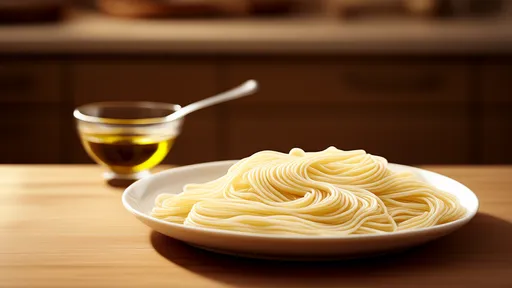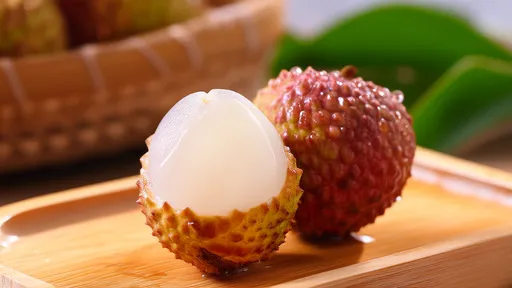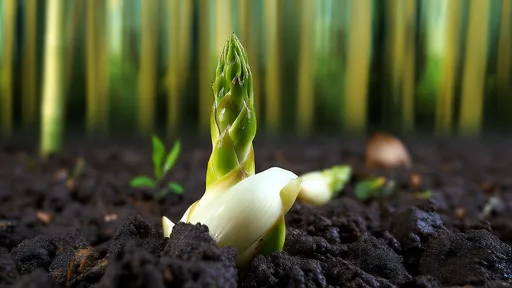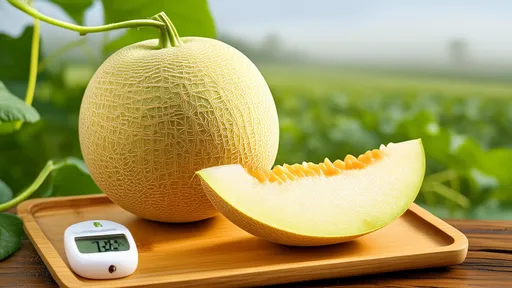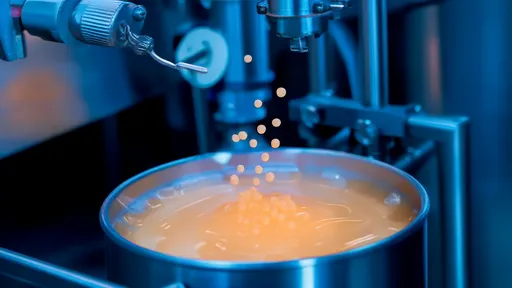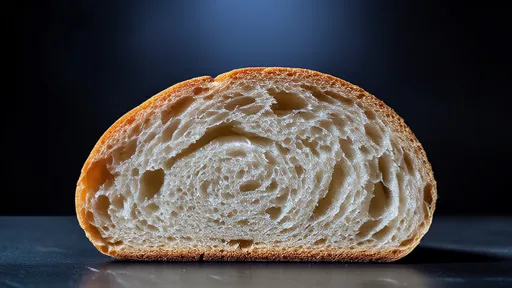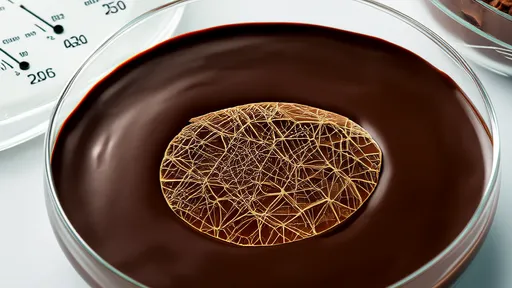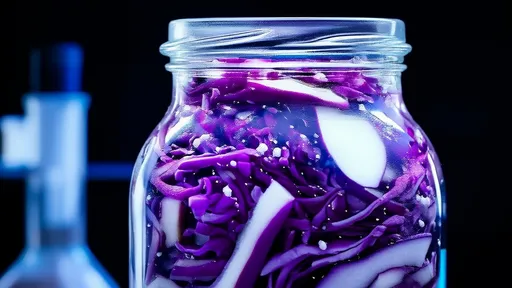The phenomenon of bread staling has puzzled bakers and food scientists for generations. While most consumers associate staleness with dryness, the underlying mechanisms involve complex interactions between starch retrogradation and water migration within the bread matrix. This intricate dance between moisture and crystalline structures ultimately determines whether your morning toast will delight or disappoint.
At the heart of bread staling lies starch retrogradation - a process where gelatinized starch molecules gradually reassociate into more ordered structures. When freshly baked, bread contains starch in an amorphous, gelatinized state that gives the crumb its soft texture. As the bread cools and ages, the starch molecules begin to realign, forming crystalline regions that make the crumb firm and less palatable. This molecular reorganization occurs most rapidly at temperatures just above freezing, explaining why refrigeration accelerates staling.
Water plays a dual role in this staling drama. Initially, moisture acts as a plasticizer, keeping the amorphous starch flexible. However, as retrogradation progresses, water molecules become redistributed within the bread's microstructure. Some water becomes trapped within the recrystallizing starch granules, while other water molecules migrate to the gluten network or evaporate from the crust. This redistribution creates uneven moisture distribution that our senses perceive as staleness.
The migration pathways of water molecules follow the bread's internal architecture. The crumb, with its porous structure and abundant starch, behaves differently from the denser crust region. During storage, moisture tends to move from the crumb toward the crust in an attempt to equalize water activity across the loaf. This moisture shift leaves the crumb drier and the crust tougher, compounding the textural degradation.
Interestingly, the staling process isn't simply about water loss to the environment. Even hermetically sealed bread will stale as internal water redistribution occurs. The critical factor is the changing relationship between water molecules and starch polymers. As starch retrogrades, it binds water more tightly in crystalline regions, making that moisture less available for maintaining softness in the amorphous regions of the starch gel.
Modern research has revealed that starch retrogradation occurs in two distinct phases. The first, occurring within hours after baking, involves rapid recrystallization of amylose molecules. The second, slower phase involves the more branched amylopectin molecules and may continue for several days. Each phase influences moisture distribution differently, with the amylopectin recrystallization being primarily responsible for the firmness we associate with stale bread.
The gluten network, often overshadowed by starch in staling discussions, actually plays a crucial moderating role. A well-developed gluten matrix can slow moisture migration by creating barriers to water movement. This explains why breads with higher protein flour often stay fresh longer - their extensive gluten networks hinder the redistribution of water that accelerates staling.
Commercial bakeries employ various strategies to combat staling, many targeting the starch-water relationship. Emulsifiers like mono- and diglycerides can complex with starch molecules, interfering with retrogradation. Enzymes such as amylases modify starch structure to slow crystallization. Hydrocolloids like guar gum bind water more effectively, reducing its mobility. Each approach attempts to disrupt the inevitable march toward crystalline order in the starch matrix.
Home bakers notice that certain bread types resist staling better than others. Sourdough breads, for instance, often maintain freshness longer due to their acidic environment which affects starch gelatinization. Rye breads, with their different starch composition and higher pentosan content, exhibit altered water-binding capacity that changes their staling pattern. Even the baking process itself - the degree of starch gelatinization achieved during oven spring - sets the stage for how quickly retrogradation will occur.
The temperature dependence of staling presents practical implications. While refrigeration accelerates the process, freezing can nearly halt it by immobilizing water molecules before they can participate in starch crystallization. This explains why properly frozen bread can taste nearly fresh when thawed, while refrigerated bread turns stale within days. The temperature window between -7°C and +7°C proves particularly damaging to bread texture.
Recent advances in imaging technology have allowed scientists to visualize moisture migration in real time. Magnetic resonance imaging (MRI) studies show how water moves through different bread regions during storage, confirming theoretical models of moisture redistribution. These techniques reveal that staling isn't a uniform process - certain areas of the loaf undergo changes faster than others, creating texture gradients that affect the eating experience.
The sensory perception of staleness involves more than just physical changes. As starch retrogrades and moisture redistributes, flavor compounds also migrate and degrade. The loss of fresh-bread aroma compounds and the concentration of less-volatile flavors contribute to the sensory profile of stale bread. This explains why even when reheated (which can temporarily reverse some starch crystallization), stale bread never quite recaptures its initial freshness.
Looking forward, researchers are exploring novel ingredients and processing methods to extend bread freshness. From modified starches that resist retrogradation to edible coatings that limit moisture loss, the battle against staling continues. Some studies even investigate the use of ultrasound or high-pressure processing to alter starch-water interactions. As our understanding of the fundamental physics and chemistry of bread staling grows, so too does our ability to delay this inevitable process.
Ultimately, bread staling serves as a fascinating example of how molecular-scale changes manifest in everyday experiences. The interplay between starch retrogradation and water migration creates a complex, time-dependent transformation that bakers have sought to control for centuries. While we may never completely prevent staling, each new discovery brings us closer to prolonging the simple pleasure of fresh bread.
The art of unlocking the full potential of spices lies in a time-honored technique: dry-roasting, crushing, and coaxing out their essential oils. This ancient method, passed down through generations of culinary masters, transforms ordinary spices into aromatic powerhouses that elevate dishes to extraordinary heights. The process may seem simple at first glance, but mastering it requires patience, precision, and an understanding of how heat interacts with different spice varieties.
For many home cooks and professional chefs, peeling and cutting yams can be an unexpectedly unpleasant experience. The vegetable, known for its nutritional benefits and culinary versatility, has a notorious side effect – it can leave your hands unbearably itchy. This common kitchen woe has led to numerous home remedies and old wives' tales, but one surprising solution has emerged from modern technology: the microwave.
The art of making dumplings is a cherished tradition in many cultures, particularly in Chinese cuisine. While the filling often steals the spotlight, the dough wrapper plays an equally crucial role in ensuring the dumplings hold together during cooking. One of the most effective yet underrated techniques for preventing dumpling wrappers from tearing is incorporating egg whites into the dough. This method leverages the science of proteins to create a more resilient and elastic wrapper, capable of withstanding the rigors of boiling or steaming without falling apart.
In kitchens around the world, cooks face a common nemesis when preparing pasta: sticky noodles that clump together into an unappetizing mass. While many swear by the traditional method of rinsing cooked pasta with cold water to prevent sticking, a growing number of culinary experts argue that tossing freshly boiled noodles with olive oil proves far more effective. This technique not only preserves the pasta's ideal texture but also enhances its flavor profile in ways cold water simply cannot match.
Guangdong lychee, a jewel of southern China's fruit basket, has long been celebrated for its succulent flesh and floral aroma. Beyond its irresistible taste, recent research has uncovered a hidden treasure within its vibrant red peel—polyphenols with remarkable antioxidant properties. These compounds are quietly revolutionizing our understanding of how this tropical fruit may contribute to human health far beyond basic nutrition.
The high-altitude coffee farms of Yunnan Province have long been celebrated for producing beans with a distinctive flavor profile. Among the many factors influencing taste, altitude plays a particularly crucial role, especially when it comes to acidity. Unlike the bright, sharp acidity often associated with African coffees, Yunnan’s beans exhibit a more nuanced relationship between elevation and tartness—one that defies simple expectations.
The tender crunch of Zhejiang bamboo shoots has long captivated gourmets and scientists alike, their delicate texture standing as a testament to nature's perfect engineering. While chefs praise their culinary versatility, researchers have uncovered a fascinating cellular secret behind their remarkable freshness – turgor pressure. This biological phenomenon, often overlooked in discussions of vegetable quality, holds the key to understanding why these spring delicacies from China's eastern province maintain their youthful crispness long after harvest.
The Hami melon, a jewel of Xinjiang's agricultural bounty, owes its legendary sweetness to a climatic phenomenon as ancient as the Silk Road itself. Nestled in the arid embrace of China's northwest, this golden-fleshed fruit has thrived for centuries under skies that scorch by day and chill by night. What appears as hardship to most crops becomes the secret alchemy transforming ordinary melons into saccharine masterpieces.
The vast fields of Northeast China, stretching across latitudes from 40°N to 50°N, have long been celebrated as the heartland of soybean production. Among the many factors influencing soybean quality, protein content stands out as a critical metric, not just for nutritional value but also for industrial applications. Recent studies have unveiled a fascinating pattern: the protein content in Northeast soybeans exhibits significant variation along latitudinal gradients. This discovery has sparked renewed interest in understanding how geography shapes the very fabric of this agricultural staple.
The process of homogenization in ice cream mix preparation plays a pivotal role in achieving the desired texture, stability, and mouthfeel of the final product. At the heart of this process lies the principle of fat emulsification, where milk fat globules are broken down into smaller, more uniform particles. This not only enhances the emulsion's stability but also ensures a smoother consistency in the ice cream. The science behind homogenization parameters is both intricate and fascinating, as it directly influences the quality of the end product.
The phenomenon of bread staling has puzzled bakers and food scientists for generations. While most consumers associate staleness with dryness, the underlying mechanisms involve complex interactions between starch retrogradation and water migration within the bread matrix. This intricate dance between moisture and crystalline structures ultimately determines whether your morning toast will delight or disappoint.
The formation of rock sugar crystals is a fascinating interplay of chemistry and physics, where the delicate balance of supersaturation dictates the birth and growth of crystalline structures. At its core, this process hinges on the creation of nucleation sites—tiny clusters of molecules that serve as the foundation for larger crystals. The journey from syrup to shimmering rock sugar is anything but straightforward, and understanding the factors that influence nucleation can unlock greater control over crystal size, clarity, and yield.
The art of chocolate tempering is a delicate dance of temperature control, one that hinges on the precise crystallization of cocoa butter. This process is not merely a technical step in chocolate production; it is the very heart of what gives chocolate its signature snap, glossy sheen, and melt-in-the-mouth texture. Without proper tempering, chocolate can appear dull, develop a grainy texture, or fail to release cleanly from molds. The secret lies in understanding how cocoa butter behaves under varying thermal conditions.
The science behind pickling vegetables has fascinated food chemists and home cooks alike for centuries. While the process may seem straightforward – submerging vegetables in brine – the molecular dance occurring within each cell reveals a complex interplay of chemistry and physics. Recent advances in sodium ion detection techniques have allowed researchers to map the distribution of salt throughout pickled vegetables with unprecedented precision, shedding new light on this ancient preservation method.
The phenomenon of "wine legs" or "tears of wine" has captivated drinkers and scientists alike for centuries. When a glass of wine or spirit is swirled, droplets form on the inside of the glass, creating mesmerizing streaks that slowly trickle back down. This elegant display isn’t just a sign of a good drink—it’s a fascinating interplay of fluid dynamics, surface tension, and evaporation.
